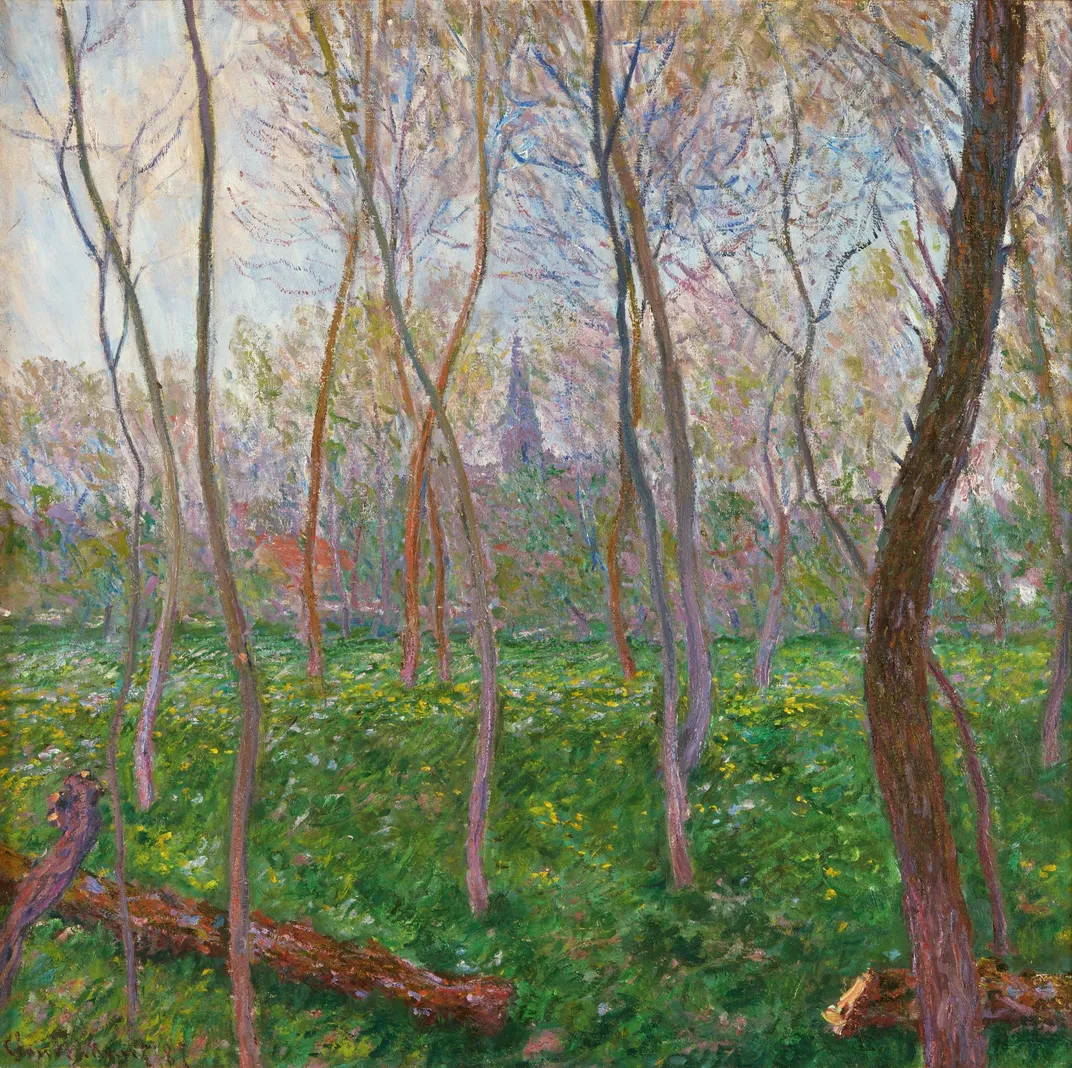
Meules à Giverny, Claude Monet, 1893
Sotheby’s
In the late 19th century, Claude Monet created an astonishing series of haystack paintings, which are now among the Impressionist artist’s most recognizable works. Later this month, one of those pieces—Meules à Giverny (1893)—will go to auction at Sotheby’s in New York, where it’s expected to fetch more than $30 million.
The auction is timed to coincide with the 150th anniversary of the first Impressionist exhibition. Held in Paris in 1874, the show featured now-famous artists like Camille Pissarro, Pierre-Auguste Renoir and Edgar Degas. But it was one of Monet’s works—Impression, Sunrise (1872)—that cemented Impressionism’s legacy. In a review of the show in the Parisian newspaper Le Charivari, critic Louis Leroy mockingly used the term “Impressionist,” inadvertently coining the name for the artistic movement.
“Reflecting on the 150th anniversary of the very first Impressionist exhibition, we cannot take for granted how truly radical Monet was as a painter,” says Allegra Bettini, head of the upcoming auction, in a statement. “With his haystacks, the revolutionary ideas and techniques that initially defined Impressionism are expertly employed during a moment of significant transformation for the artist.”
Monet started painting haystacks in the mid-1880s, about 15 years after that pivotal exhibition in Paris. His best-known haystack works are a series he completed in the picturesque French village of Giverny in 1890 and 1891. According to My Modern Met’s Margherita Cole, the artist would wake up at 3:30 a.m. and carry his supplies to his chosen site, where he would paint many works en plein air in the course of a single day.
The French countryside held a special place in Monet’s heart. “It is decidedly not my business to be in cities,” he once wrote to his wife, per Sotheby’s. Throughout the artist’s career, Giverny and its surrounding landscapes served as the setting for many of his most iconic pieces, eventually inspiring his famous water lily works.
“The primary reason for painting the haystacks series was to study the light—a theme that interested Monet and other Impressionists greatly,” per My Modern Met. “Depending on the time of day, the weather and the season, the appearance of these stacks changed. Monet’s expressive depictions attempted to capture these ephemeral changes and highlight the beauty of light.”
The artwork heading to the auction block is one of Monet’s later haystack paintings. Completed in 1893, the piece was purchased by landscape painter Dwight Blaney two years later. Blaney brought the piece back to the United States, where he lent it to the Museum of Fine Art in Boston. The painting was “among the first works by Monet to come to the U.S.,” writes Penta’s Abby Schultz. As such, it was also “among the first Monets to inspire the so-called American Impressionists.”
While Meules à Giverny certainly has a high estimated price tag, the piece is far from the artist’s most expensive. Five years ago, Sotheby’s sold another haystack painting, Monet’s Meules (1890), for an impressive $110.7 million. The work set a new record for the artist—and became the most expensive Impressionist piece sold at auction.
Bennecourt, Claude Monet, 1887 Sotheby’s
For decades, Meules à Giverny has remained in the same private collection, according to the Observer’s Alexandra Tremayne-Pengelly. The piece is now on view in New York ahead of Sotheby’s Modern Evening Sale on May 15.
Other notable works in the sale include Camille Pissarro’s Paysage aux Pâtis, Pontoise, la moisson (1873), Pablo Picasso’s Courses de taureaux (1901), Childe Hassam’s View of Broadway and Fifth Avenue (1890) and Monet’s Bennecourt (1887). Christie’s is also selling a Monet this spring: Moulin de Limetz (1888), which is expected to fetch between $18 million and $25 million.
This post was originally published on this site be sure to check out more of their content





